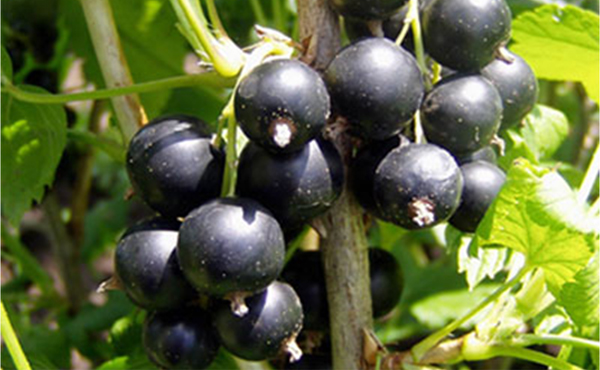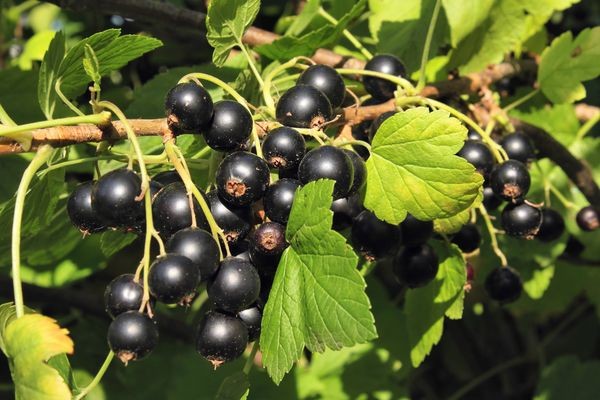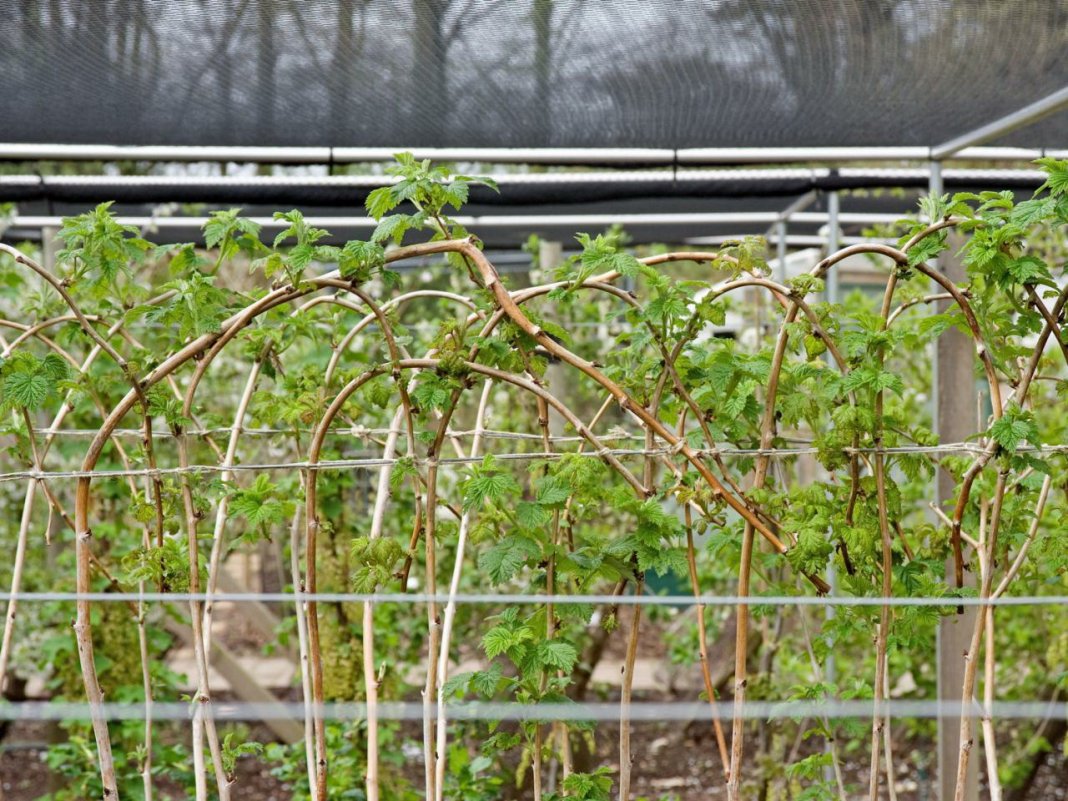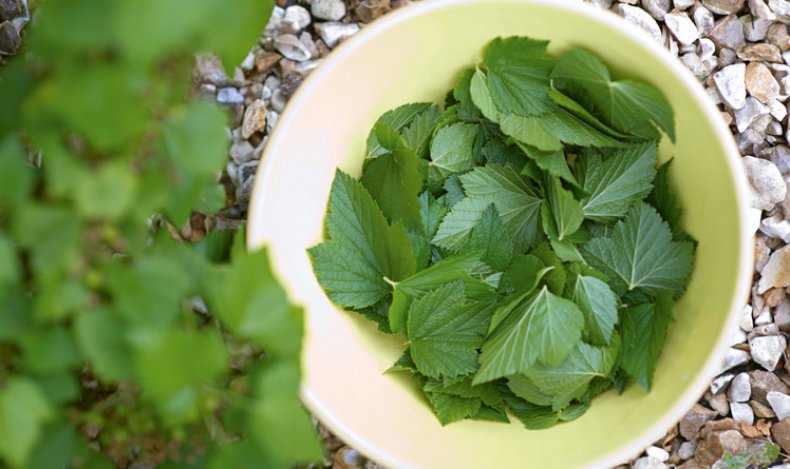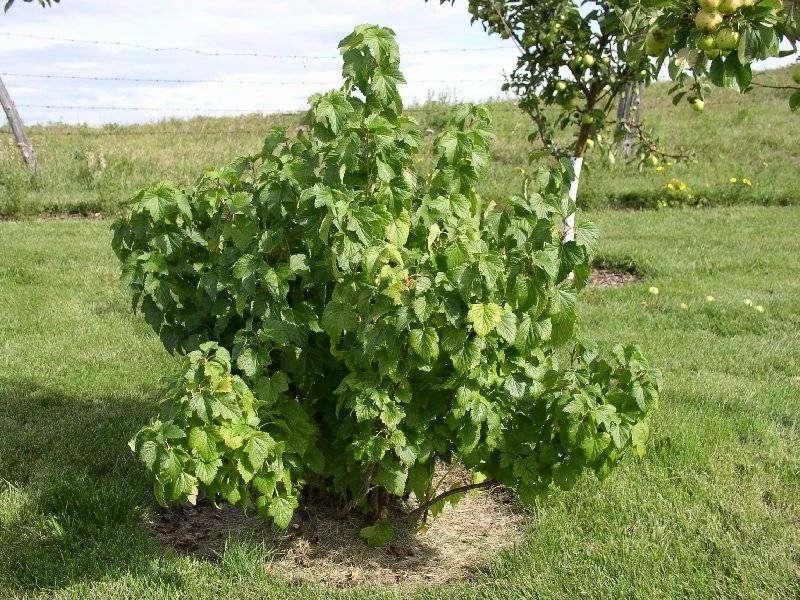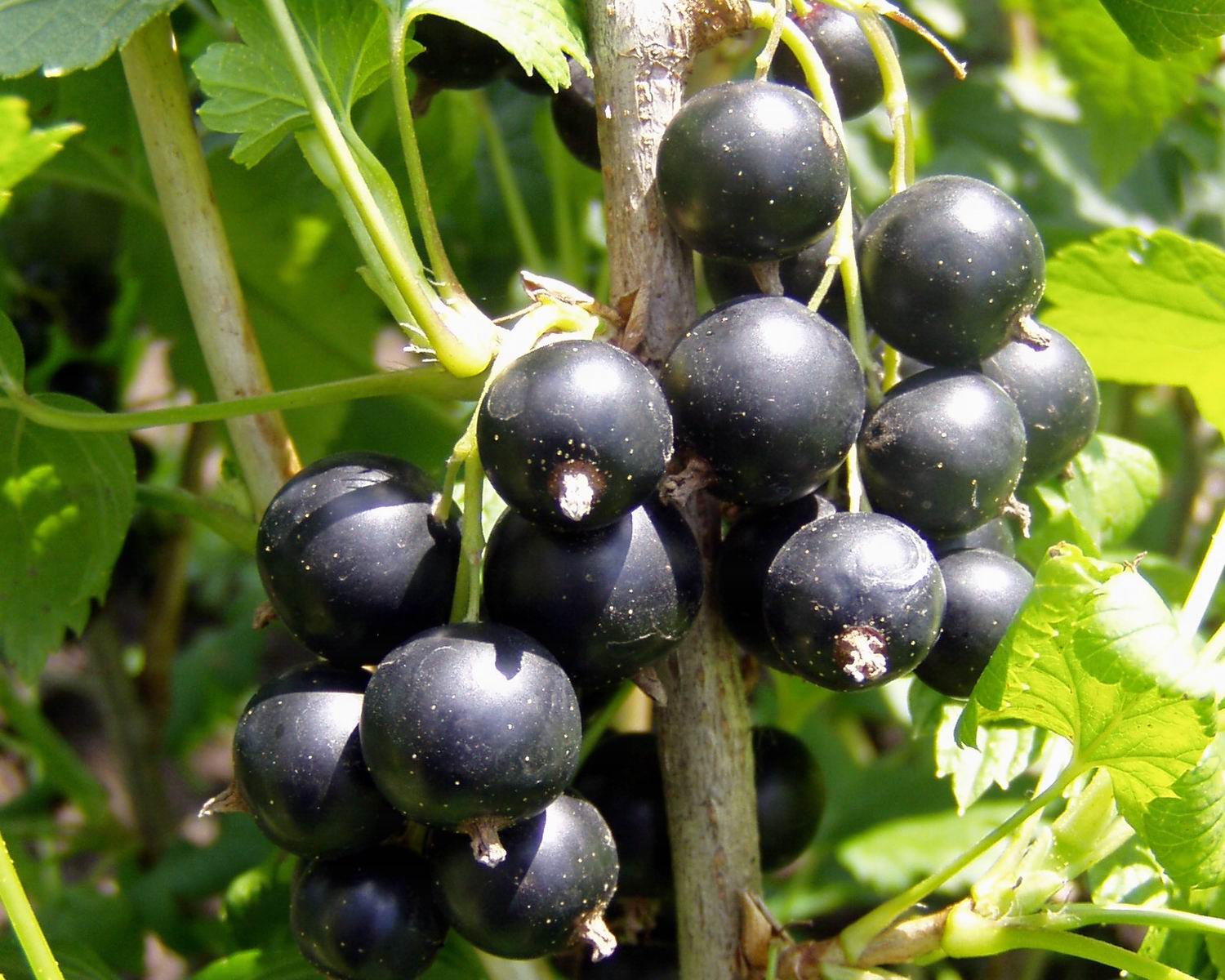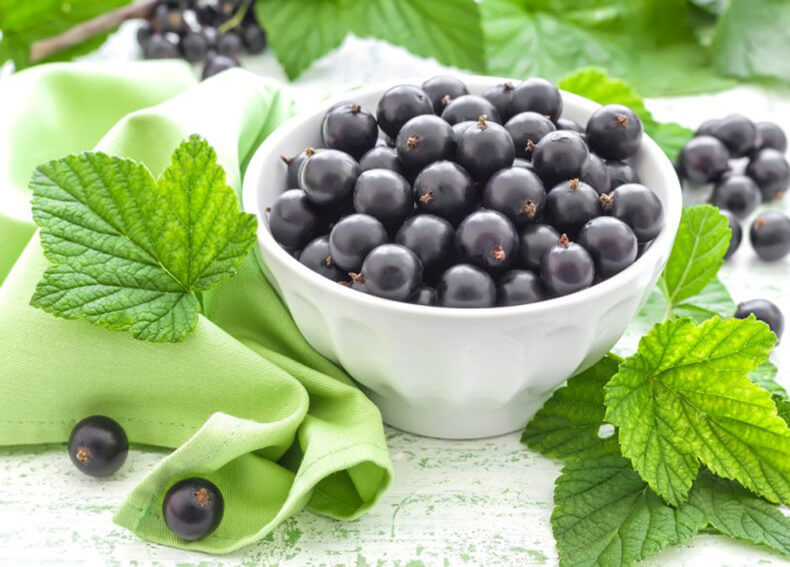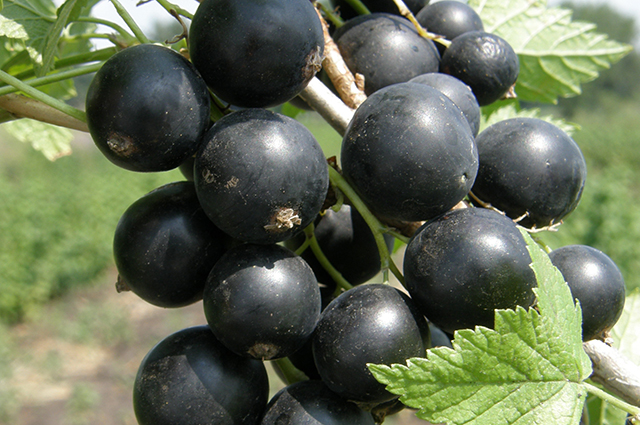Content:
Currently, a lot of currant varieties have been bred. Each variety has its own characteristics, advantages and disadvantages. Therefore, when choosing the ideal option for your site, it is important to obtain the most complete information about the variety.
Description of the variety of currant Dove
The Blackcurrant Dove variety was bred by the gardeners of the Siberian Research Institute by crossing the European Sanders variety and the Primorsky Champion. Distributed throughout the country. Currant Dove early maturing, self-fertile, fruitful. This variety has high winter hardiness, but is not very resistant to powdery mildew and kidney mites. Dove bushes are low, semi-spreading, dense. The clusters on the bushes reach a length of about 4-7 cm, in one cluster there are up to 8 berries. The berries are medium in size, oval in shape, thin skin, covered with a bluish bloom. The fruits do not have good transportability, they are only suitable for processing.
The Golubka variety is widespread in the Urals, in the Volgo-Vyatka, West Siberian, North-West and Central regions of Russia. It was bred in the first half of the 20th century at the Research Institute of Horticulture in Siberia by crossing a European variety and a Primorsky Champion variety. When growing Golubka, special attention was paid to its ability to survive the low temperatures typical of Siberian winters. So it will survive frosts up to 30 degrees without any problems.
The bushes of this variety are classified as low-growing and medium-spreading. They are densely covered with leaves. Medium-sized leaves are colored dark green, have tips curled down and many small notches. The leaves are loose and smooth to the touch. Such plant diseases as terry and anthracnose are not scary for currants. However, Dovewing has a high risk of being affected by powdery mildew or kidney mites.
Dove blooms from mid-May to June. During flowering, the bushes first become covered with red buds, then pale pink flowers appear. After flowering, medium clusters appear, each of which grows 7-8 berries. Dove currant belongs to the early ripening, so the berries ripen in late June or early July.
Up to 2.5 kg can be harvested from one currant bush, which is not much for this culture. Black fragrant berries do not have outstanding size, their weight is about 0.7-1.8 grams. Their peculiarity is in a high content of vitamin C. They ripen at the same time, do not fall off for a long time, and are easily removed from the brush. The pulp of berries contains: up to 7.5% sugar, up to 3.9% acids and up to 160 mg% ascorbic acid. The taste of the fruit is sour or sweet and sour; experts give the taste of this variety a low score. For this reason, as well as because of the poor transportability of the harvest, most often the Dove berries are sent for processing, for example, for jam.
Advantages and disadvantages of the variety
Currant Blueberry variety description shows the following breeding disadvantages:
- - low transportability of the crop;
- - sour taste of fruits;
- - unsuitability of berries for eating raw;
- - low productivity;
- - wet separation of fruits from the brush.
The advantages of the variety are:
- - high winter hardiness;
- - early maturity;
- - resistance to anthracnose and terry.
The dove was at one time the result of the first attempts to breed domesticated currants, and its characteristics for that time were not bad. Since then, many varieties have been created with better performance than Golubka.Therefore, at present, this variety is considered obsolete, and it is gradually being phased out. One of the more modern and promising varieties is the Dove Seedling currant. Advantages of black currant Dove seedling - higher yield and better disease resistance.
Growing currants
This variety of currant has no peculiarities in cultivation. Breeding takes the usual care of the crop.
Currants are unpretentious, when grown with it, there are practically no problems. But this does not mean that it is enough to "stick" a young plant into the ground and forget about it before harvesting. We need regular watering, feeding, treatment from diseases and pests, etc. The process of growing currants can be divided into three stages:
- - preparation for the growing season;
- - plant care;
- - preparation for wintering.
Seedlings or seedlings can be used as seed. In addition, there are propagation methods such as cuttings, layering, grafting and dividing the bushes. The last method is one of the most common. In early spring, the land near the bush is watered. Then they dig it up, cut off the old, rotting branches. All young branches are shortened to 20-30 cm. Then what remains of the bush is cut into several parts. New plants are ready for planting.
You can plant currant seedlings, depending on the region: either in spring or in autumn. For currants, light, permeable soil, preferably alkaline, is best suited. The place for future shrubs should be well lit. Before planting, the soil must be prepared by adding compost, superphosphate and potassium sulfate to it. Seedlings are purchased a few days before planting, observing the rules for their transportation: the roots are kept moist, do not dry out.
There are three ways to plant currants. A single method involves placing the plant away from other trees and shrubs - this way it will give the maximum possible yield. Rows of bushes are planted when currants are grown on an industrial scale. But from the close location of root systems, the life of the bushes decreases. You can also install trellis supporting branches next to the plants - this is how the fruit wall is formed.
Immediately after planting, you need to water the soil around the plant, then sprinkle it with peat or humus for better adaptation of the roots to new conditions.
For the proper development of the bush, you need to follow the rules for caring for currants. That is, periodically loosen the ground, giving fresh air to the roots; maintain a humidity of 80% by regular watering. One adult bush requires two to three buckets of water per day. In no case should you overdry the top layer of the soil, since currants have a superficial root system. Watering is carried out until the first ovaries appear.
As a prophylaxis for diseases and pests, thinning is regularly carried out, removing unnecessary, improperly growing branches, and shrubs are also treated with special means. The products can only be used before flowering. Also in early spring, when the parasites are just waking up, you can water the bushes with hot water - this will kill the pests.
To stimulate the development of fruits, shoots are cut out from black currants every year, which have already turned three to five years old. Thus, the plant is thinned out, old branches with possibly hidden larvae of parasites and pathogens are removed. This can be done in spring and summer, after harvesting the fruits, and in autumn, after the leaves have fallen off.
One of the most common currant diseases is powdery mildew. Because of it, a white bloom forms on the berries, and the shrub itself noticeably lags behind in development. At the first sign of powdery mildew, the bush is sprayed with copper sulfate or a solution of soda ash.Kidney mites, the most common pest, are eliminated with the help of preparations based on colloidal sulfur. The buds and branches affected by parasites are cut off.
Black currant is a self-pollinating plant. This property can be used by planting several varieties in one area. So the fruits will be larger. You can use not only berries for cooking various dishes. Currant leaves are often used for salting various vegetables.
Despite the high frost resistance, the bushes must be provided with additional protection for the winter. There are two methods for this. You can bend the currant branches to the ground and lay them on top with bricks. It is important to proceed with caution in order not to damage the plants. But this method of preserving the plant is only suitable during a snowy winter. You can also wrap the branches of the bushes with insulation, in case of winter without snow.
Blackcurrant normally survives frosts - varieties common in Siberia survive at -40 degrees. Next season, she will again delight her owners with berries. A currant bush can grow and bear fruit in one place for up to 15 years.
When choosing a seed for your garden, you need to take into account many characteristics of a particular variety. It is important that they are suitable for the conditions on the site (climate, soil type, etc.) and meet the goals of the owner (selling the berries obtained or eating). A perfect plant, perfect in all respects, has not yet been bred. You can only look for a "golden mean" among the variety of varieties. A well-chosen plant will cause fewer problems and yield more yield.
